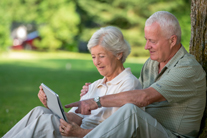The number of hospice programs and individuals using hospice care in the United States has grown steadily over the past several years. According to the National Hospice and Palliative Care Organization (NHPCO), in 2011 an estimated 1.65 million patients received hospice services from 5,300 providers in the United States compared to 1.4 million from 4,700 providers in 2007.
The number of hospice programs and individuals using hospice care in the United States has grown steadily over the past several years. According to the National Hospice and Palliative Care Organization (NHPCO), in 2011 an estimated 1.65 million patients received hospice services from 5,300 providers in the United States compared to 1.4 million from 4,700 providers in 2007.
This growth is not surprising given the many benefits hospice provides to patients and their caregivers, not to mention the significant cost savings that can accrue to the healthcare system as a result of using hospice (which has per diem costs 6x lower than the average for other delivery settings). Despite the growth and benefits, hospice has been and continues to be underutilized as evidenced by the downward trend in the median lengths of service.
We’ve found that the primary cause of hospice underutilization is the delay in referrals to hospice programs. Referrals into programs are too often made in the last weeks of the patient’s life; only after all curative treatments have been exhausted. These late referrals mean that patients and their caregivers do not receive the full benefit that hospice is designed to provide. The largest contributors to the delayed use of hospice include:
- The continued use of intensive care;
- Increased testing by specialists;
- Prolonged ICU stays at the end-of-life, which dramatically increases costs without significant improvements in the patient’s condition; and
- The reluctance of physician’s and their assistants to discuss hospice as they do not want to be seen as giving up hope on their patient and upsetting the family, or may not have the understanding about the broader set of services hospice can provide.
There is also a common set of misconceptions about hospice that contributes to late referrals including the belief that once a patient forgoes curative treatment, they cannot return if their medical condition improves. In fact, if a patient’s condition does improve, they can be discharged and return to their daily lives as well as curative treatment. Another common misconception is the thought that hospice care is only limited to six months. Under Medicare’s current policy, the initial benefit period is 90 days. If the patient’s illness continues and it remains likely that the patient has a life expectancy of less than six months, the patient can be recertified for another 90 days. After the second period, the patient can be recertified for an unlimited number of 60 day periods, as long as he or she remains eligible.
Hospice currently serves a critical need in the healthcare system as a result of rising healthcare costs and unnecessary admissions. End-of-life care alone consumes a disproportionate amount of Medicare spending (accounting for up to 25% of all Medicare expenditures).
As mentioned above, hospice care can significantly lower costs when compared to other care delivery settings and those savings can be enhanced by not delaying the use of hospice until the last few weeks or days of a patient’s life.
Hospice providers need to actively educate the public and care providers about the benefits of hospice, while focusing on clinical excellence in determining proper client eligibility prior to admissions.
Let us know what you think.









